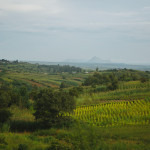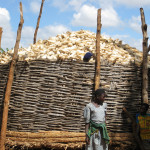Malawi has the potential to reorient its smallholder agriculture away from being primarily directed towards assuring household subsistence and self-sufficiency to increased commercial production, including of soybean. This study shows how this shift would reduce the country’s reliance on tobacco and diversify its agricultural production and exports. As a legume, furthermore, soybean would also have […]
FSP Research Paper 17: Crop suitability maps and an agricultural zonation scheme for Malawi
Although relatively small, Malawi is a country with significant agro-ecological diversity. In consequence, generations of Malawian farmers have developed a variety of quite complex farming systems to exploit distinct combinations of local agricultural resources. An important implication of this variety of farming systems is that the comparative advantage of different areas of Malawi for the production […]
Working Paper 16: Discretionary maize policy interventions in Malawi: An impact analysis of export bans and minimum farm gate price
This study assesses the efficacy of maize export bans in improving food security in Malawi and of minimum farm gate prices in increasing the incomes of Malawian smallholder farmers. It relies primarily on price and trade flow analysis using secondary data. In brief, the analysis shows that neither tool has been particularly effective in recent […]
Policy Note 25: Are Malawi’s maize and soya trade restrictions causing more harm than good? A summary of evidence and practical alternatives
Since the early 2000's, the government of Malawi has used trade restrictions, export bans in particular, to control trade flows for maize and soya, among other crops. This note explores how effective maize and soya export bans have been in achieving their stated goals. It also considers the unintended side effects of export bans, including […]
Working Paper 15: Achieving food security and industrial development in Malawi: Are export restrictions the solution?
Restrictions on exports of staples or cash crops are frequently imposed in developing countries to promote food security or industrial development goals. By diverting production to the local market, these policies aim to reduce prices and increase the supply of food or intermediate inputs to the benefit of consumers or downstream industrial users. Although export […]
- « Previous Page
- 1
- …
- 57
- 58
- 59
- 60
- 61
- …
- 68
- Next Page »


